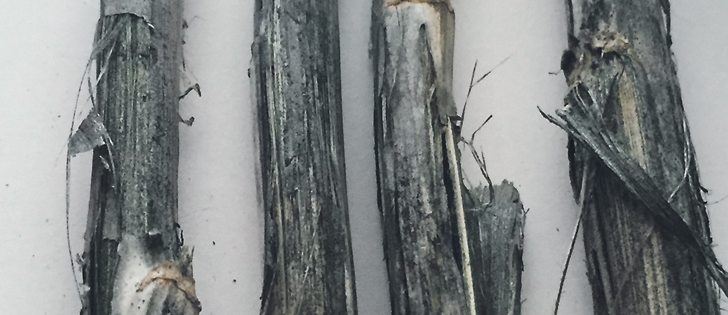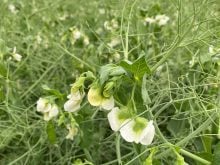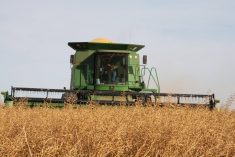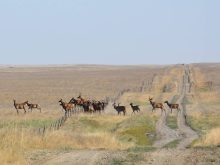Canada’s canola industry was in a full-blown panic two years ago.
Crop pathologists had found a treacherous disease in an eastern Manitoba canola field and people in the industry were throwing around scary words like “quarantine” and “eradication” to describe the situation.
The same disease, verticillium wilt, is present in fields across Western Canada this fall, but canola experts aren’t particularly concerned.
“Six provinces (have) the disease…. I imagine we’ve all seen it before, we just didn’t know what it was…. I think it was misdiagnosed for quite a few years,” said Justine Cornelson, a Canola Council of Canada agronomist in western Manitoba. “I did come across some (verticillium) this year in western Manitoba.”
Read Also

Crop quality looks good this year across Prairies
Crop quality looks real good this year, with the exception of durum.
Canola experts were extremely concerned in late 2014 after verticillium wilt was confirmed in a single field in the Red River Valley. Verticillium, a fungal disease, causes lesions on the plant’s stem, and it’s a significant problem for European rapeseed growers.
Industry leaders assumed the Red River Valley field was the only case of verticillium in Canada when news broke of the disease in early 2015.
“We’ve got it quarantined, isolated,” Ed Rempel of the Manitoba Canola Growers Association said that year.
Subsequent Canadian Food Inspection Agency testing showed that the geography of the disease was much, much larger.
“It’s (present) right from Quebec to British Columbia,” said Clint Jurke, agronomy director with the canola council. “Since it is widespread, likely it’s been … in Canada for quite a long time.”
Plant pathologists don’t know how it arrived in Canada, but experts are seeking an answer and will likely compare the Canadian pathogen to the verticillium found in Europe.
Canola council agronomists and others have learned a few things about the disease:
- It appears later in the growing season.
- It probably is a lesser threat in Canada because the growing season is relatively short.
“It’s sometimes called the invisible disease in Europe,” said Jurke, who attended a conference on verticillium in early October.
“It affects the crop around mid-life point … and kind of hangs out in the vascular tissue of the plant and doesn’t really manifest itself until the plant … starts to dry down.”
Reports from Sweden had suggested the disease can cause yield losses of 50 percent, but Jurke said more recent research indicates that figure might be excessively high.
“At the conference I came back from … they actually demonstrated there was a small yield loss last year … (with) extreme conditions for the development of the disease,” he said.
“(But) it wasn’t a huge amount. We’re not talking 50 percent. More in the order of 10 percent yield loss.”
Cornelson found evidence of verticillium in a number of Manitoba canola fields this fall but no evidence of yield loss.
“During the growing season, there was nothing wrong with the crops. Talking to the growers, they didn’t see anything wrong… lodging or wilting plants,” she said.
“But we don’t know (for certain).”
Most of the rapeseed grown in Europe is winter varieties that require 180 to 200 days to mature. Western Canada’s 100 day growing season leaves verticillium with less time to develop and wreak havoc.
“We’re fortunate we have a short growing season, cold soils…. We might be spared what we’ve seen in other parts of the world,” Jurke said.
“(But) we need to do the research and look to see under what conditions we could see a decline in yield.”
















